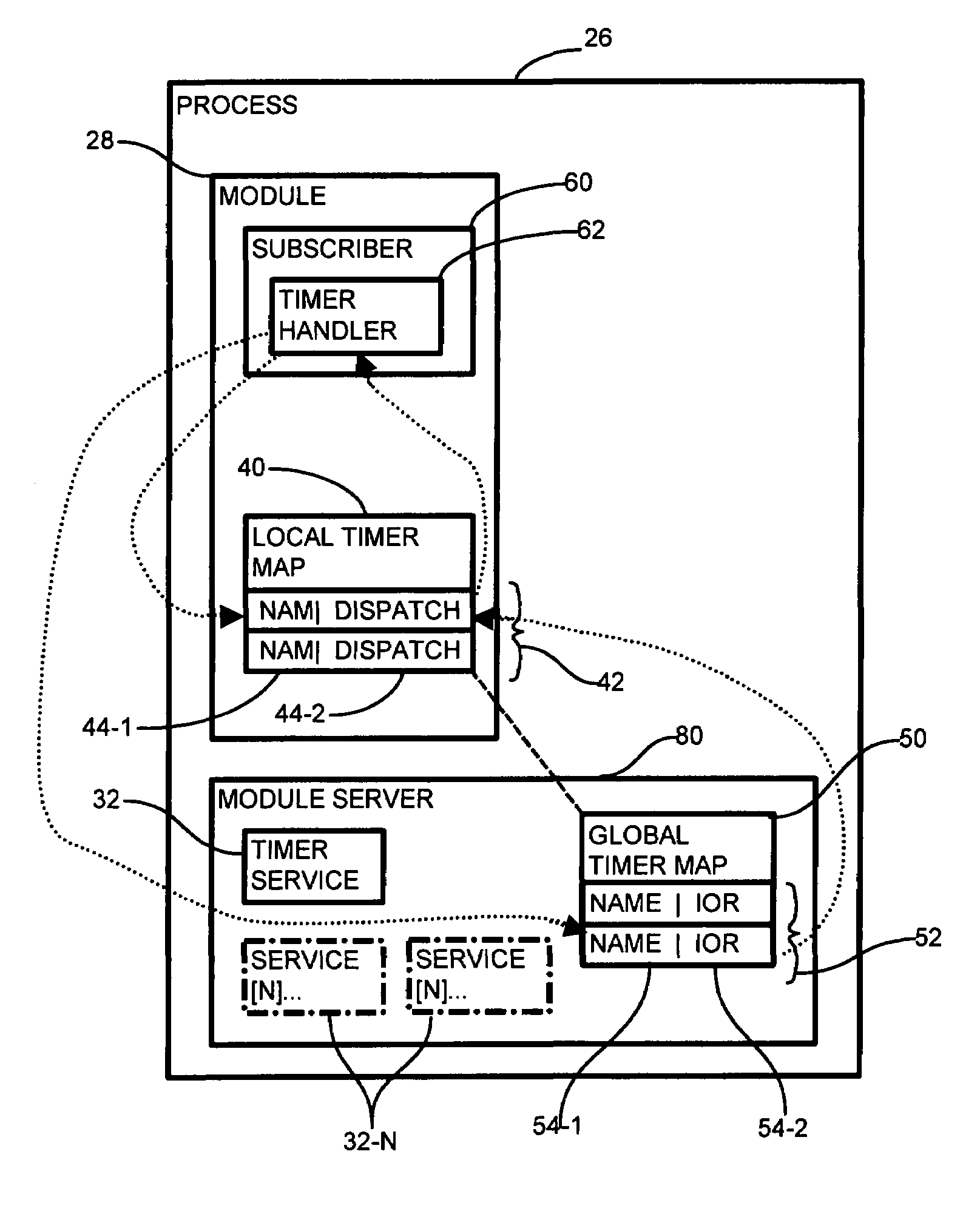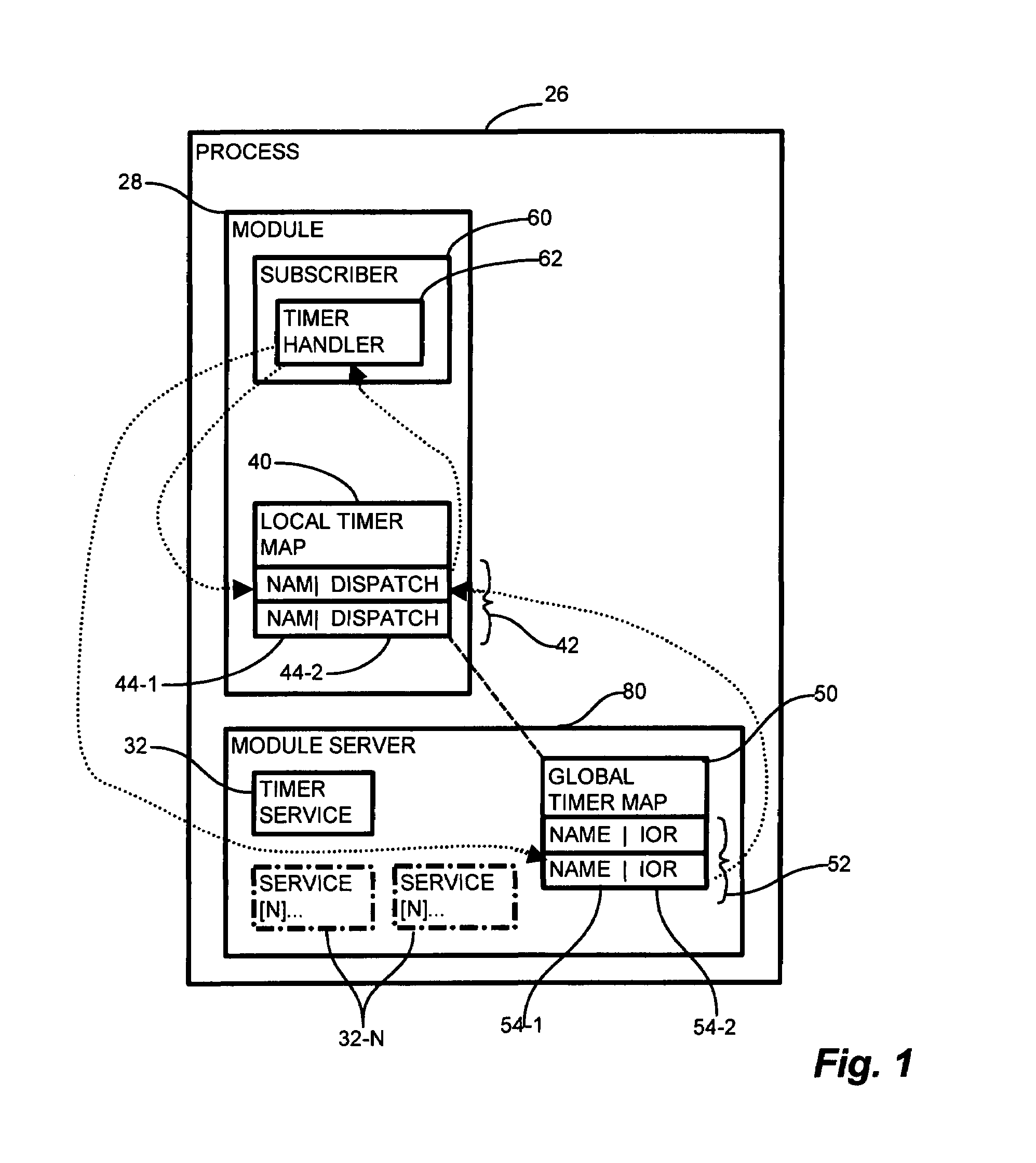Methods and apparatus for a timer event service infrastructure
a technology of event service infrastructure and timer, which is applied in the direction of generating/distributing signals, multi-programming arrangements, program control, etc., can solve the problems of complex software systems that often require time-based processing, lack of predefined or sufficiently automated timer notification, and inability to provide such a standard timer service. , to achieve the effect of reducing memory consumption and reducing memory consumption
- Summary
- Abstract
- Description
- Claims
- Application Information
AI Technical Summary
Benefits of technology
Problems solved by technology
Method used
Image
Examples
Embodiment Construction
[0032]The system of the present invention, therefore, defines a timer service infrastructure in a generalized services architecture. The exemplary timer service architecture disclosed below depicts deployment of modules including subscribers having timer handlers and invocation of the timer handlers via the subscribers containing the timer handlers. Activation and deactivation of the modules having subscribers including the timer handlers occurs automatically, without developer intervention, therefore relieving the developers of designating logic for detecting and controlling activation, or enablement, and passivation, or disablement, of the modules including the respective handlers. Module activation and deactivation, and subscriber invocation to perform the timer handlers occurs via the timer service once defined by the subscription call, discussed further below.
[0033]Particular configurations of the invention provide a method for a timer service infrastructure which localizes the...
PUM
 Login to View More
Login to View More Abstract
Description
Claims
Application Information
 Login to View More
Login to View More - R&D
- Intellectual Property
- Life Sciences
- Materials
- Tech Scout
- Unparalleled Data Quality
- Higher Quality Content
- 60% Fewer Hallucinations
Browse by: Latest US Patents, China's latest patents, Technical Efficacy Thesaurus, Application Domain, Technology Topic, Popular Technical Reports.
© 2025 PatSnap. All rights reserved.Legal|Privacy policy|Modern Slavery Act Transparency Statement|Sitemap|About US| Contact US: help@patsnap.com



